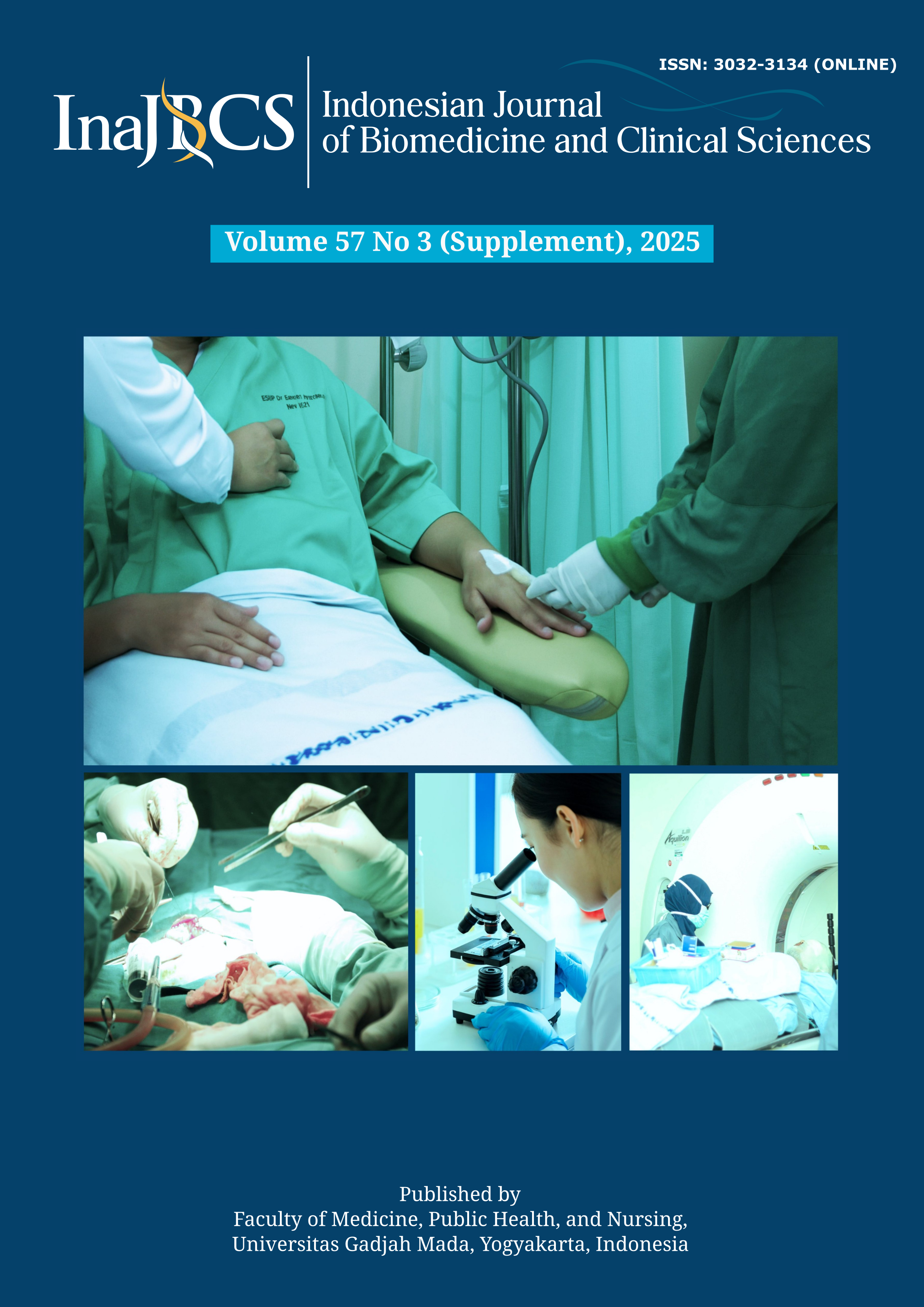Profile of nasopharyngeal carcinoma patients in two national referral hospitals: a descriptive study at Cipto Mangunkusumo Hospital and Dharmais Cancer Hospital
Abstract
Nasopharyngeal carcinoma (NPC) is the most common head and neck cancer in Indonesia and requires a multidisciplinary and multimodality approach, with radiotherapy as the mainstay treatment due to its radiosensitivity. This descriptive study aimed to describe and compare the clinical characteristics,
disease stage, and treatment patterns of NPC patients treated at two national cancer referral hospitals, Cipto Mangunkusumo General Hospital (RSCM) and Dharmais National Cancer Hospital, between January and June 2025. A total of 76 patients were included, with 52 at RSCM and 24 at Dharmais. The majority were male (71%) with a median age of 51 years (range 19–77), and most presented with stage IVA disease (61.8%). Among 40 patients who received induction chemotherapy, the TPF regimen (platinum, taxane, and 5-FU) was
the most frequently used (45%). Both hospitals utilized intensity-modulated radiotherapy (IMRT) as the radiotherapy technique. Differences were observed in concurrent chemosensitizer schedules, with RSCM employing weekly cisplatin and Dharmais using three-weekly cisplatin, reflecting differences in inpatient
access for high-dose cisplatin requiring optimal hydration. Overall, patient characteristics at both centers were comparable in terms of sex distribution, age range, and predominance of locally advanced disease at diagnosis. Treatment regimens largely followed national standards, with variations explained by institutional settings. These findings highlight the need to strengthen early detection strategies, ensure standardized management, and evaluate the referral system for NPC in Indonesia.






